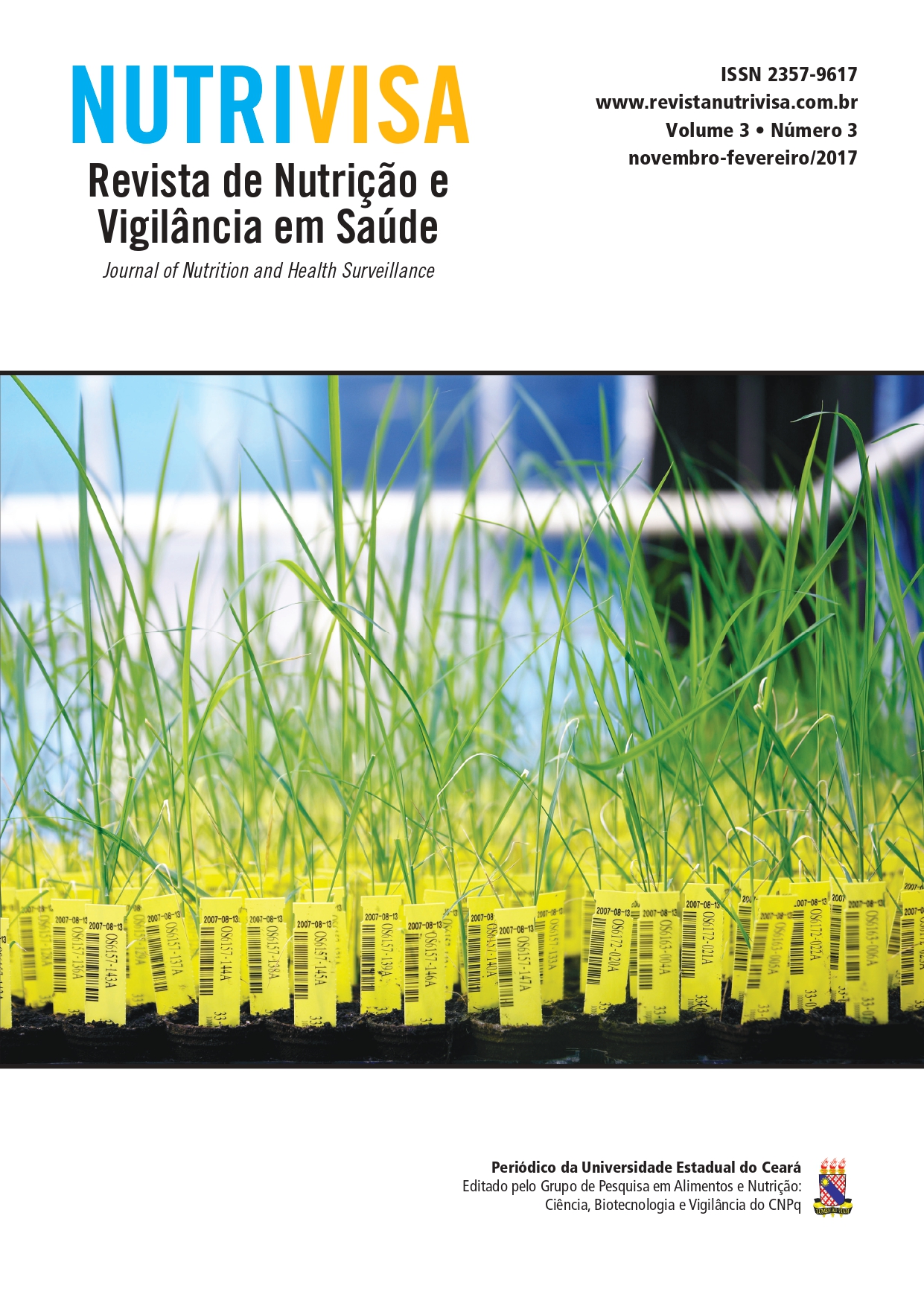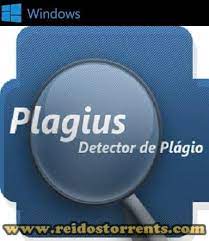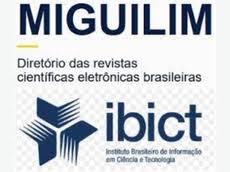Efeitos isolados e combinados da suplementação de flavonoides e exercício físico frente ao perfil bioquímico e oxidativo
DOI:
https://doi.org/10.17648/nutrivisa-vol-3-num-3-iPalavras-chave:
flavonoides, exercícios físicos, terapêutica, perfil bioquímico, oxidativoResumo
O estudo teve como objetivo analisar e discutir criticamente trabalhos sobre os efeitos da suplementação isolada e combinada de flavonoides com o exercício físico no perfil bioquímico e oxidativo. Nesta revisão de literatura, foram selecionados artigos originais encontrados em bibliotecas virtuais relevantes sobre o tema em questão. A revisão sistemática demonstrou que os flavonoides promovem efeitos hipolipemiantes, hipoglicêmicos e aumentam as defesas antioxidantes, entretanto, não existe um consenso sobre seus mecanismos. Já está bem estabelecido que o exercício físico promove efeitos metabólicos benéficos no perfil bioquímico e oxidativo, entretanto, as variáveis modelo, volume e intensidade interferem na magnitude dos resultados. Na combinação da suplementação de flavonoides com exercícios físicos, acredita-se que possa existir efeito potencial sinérgico, tanto no controle bioquímico, quanto no aumento de defesas antioxidantes ocasionados pelos flavonoides, podendo ser uma associação terapêutica interessante no tratamento de doenças cardiometabólicas. Embora diversos estudos confirmem tais efeitos, ainda existem muitas discussões sobre os mecanismos de ação dos flavonoides cítricos e sua combinação com o exercício físico, sendo que as maiorias dos estudos são realizados em modelo experimental ou in vitro. Portanto, são necessárias mais investigações referentes à suplementação associada ao exercício físico com protocolos padronizados em humanos.
Referências
AKIYAMA, Satoko et al. Dietary Hesperidin Exerts Hypoglycemic and Hypolipidemic Effects in Streptozotocin-Induced Marginal Type 1 Diabetic
Rats. J. Clin. Biochem. Nutr., [s.l.], v. 46, n. 1, p.87-92, 2009. The Society for Free Radical Research Japan.
BABU, Pon Anandh; LIU, Dongmin. Green Tea Catechins and Cardiovascular Health: An Update. Cmc, [s.l.], v. 15, n. 18, p.1840-1850, 1 ago. 2008. Bentham Science Publishers Ltd.. http://dx.doi. org/10.2174/092986708785132979
BEXFIELD, N. A. et al. Adaptations to high-intensity intermittent exercise in rodents. Journal Of Applied Physiology, [s.l.], v. 107, n. 3, p.749-754, 16 jul. 2009. American Physiological Society.
BOK, Song-Hae. et al. Plasma and hepatic cholesterol and hepatic activities of 3-hydroxy-3-methyl-glutaryl- coa reductase and acyl coa: cholesterol transferase are lower in rats fed citrus peel extract or a mixture of citrus bioflavonoids. American Society for Nutritional Sciences. [s.l.], v. 129 n. 6, p. 1182-1185, 23 Fev. 1999.
BOTEZELLI, José D et al. Different exercise protocols improve metabolic syndrome markers, tissue triglycerides content and antioxidant status in rats. Diabetol Metab Syndr, [s.l.], v. 3, n. 1, p.35-43, 2011.
CHEIK, Nádia Carla et al. Efeito de diferentes frequências de exercício físico na prevenção da dislipidemia e da obesidade em ratos normo e hipercolesterolêmicos. Rev. Bras. Educ. Fís. Esp., São Paulo, v.20, n.2, p.121- 29, abr./jun. 2006.
CLARKSON, M.P.;THOMPSON H.S. Antioxidants: what role do they play in physical activity and health? Am J Clin Nutr. [s.l.],v. , n. 2, p. 637-646, Aug. 2000.
DONNELLY, Joseph E. et al. Appropriate Physical Activity Intervention Strategies for Weight Loss and Prevention of Weight Regain for Adults. Medicine & Science In Sports & Exercise, [s.l.], v. 41, n. 2, p.459-471, fev. 2009. Ovid Technologies (Wolters Kluwer Health).
EGERT, S.; RIMBACH, G.. Which Sources of Flavonoids: Complex Diets or Dietary Supplements?. Advances In Nutrition: An International Review Journal, [s.l.], v. 2, n. 1, p.8-14, 1 jan. 2011.
FRAJACOMO, F. T. T. et al. The effects of high-intensity resistance exercise on the blood lipid profile and liver function in hypercholesterolemic hamsters. Appl. Physiol. Nutr. Metab., [s.l.], v. 37, n. 3, p.448-454, jun. 2012.
FUJII, N. et al. Role of AMP-activated protein kinase in exercise capacity, whole body glucose homeostasis, and glucose transport in skeletal muscle. Diabetes
Research And Clinical Practice, [s.l.], v. 77, n. 3, p.92- 98, set. 2007.
GARG, A. et al. Chemistry and pharmacology of the citrus bioflavonoid hesperidin. Phytother. Res. [s.l.], v. 15, n. 8, p.655-669, 2001.
GORINSTEIN, Shela et al. Effect of hesperidin and naringin on the plasma lipid profile and plasma antioxidant activity in rats fed a cholesterol- containing diet. Journal Of The Science Of Food And Agriculture, [s.l.], v. 87, n. 7, p.1257-1262, 2007.
GUERRA, R. L. et al. Effects of 2 or 5 consecutive exercise days on adipocyte area and lipid parameters in Wistar rats. Lipids Health Dis, [s.l.], v. 6, n. 1, p.16-24, 2007.
HALEAGRAHARA, N. et al. Flavonoid quercetin protects against swimming stress-induced changes in oxidative biomarkers in the hypothalamus of rats. European Journal Of Pharmacology, [s.l.], v. 621, n. 1-3, p.46-52, out. 2009
HIJIYA, H.; MIYAKE, T. European Patent 0402049 (1991).
HUANG, Han-hung et al. Exercise Increases Insulin Content and Basal Secretion in Pancreatic Islets in Type 1 Diabetic Mice.Experimental Diabetes Research, [s.l.], v. 2011, p.1-10, 2011.
JUNG, Un Ju et al. The hypoglycemic effects of hesperidin and naringin are partly mediated by hepatic glucose-regulating enzymes in c57bl/ksj-db/db mice. American Society for Nutritional Sciences, [s.l.], v. 134 p. 2499-2503, Out, 2004.
JUNG, Un Ju et al. Effect of citrus flavonoids on lipid metabolism and glucose-regulating enzyme mRNA levels in type-2 diabetic mice. The International Journal Of Biochemistry & Cell Biology, [s.l.], v. 38, n. 7, p.1134-1145, 2006.
NUTRITION, Institute Of Medicine Food And. Dietary Reference Intakes for Energy, Carbohydrate, Fiber, Fat, Fatty Acids, Cholesterol, Protein, and Amino Acids (Macronutrients). Instituto Of Medicine Of The National Academies, [s.l.], p.53-83, 28 out. 2005. The National Academies Press. http://dx.doi.org/10.17226/10490.
KATO, Y. et al. Preparation of a monoclonal antibody tone-(hexanonyl) lysine: application to the evaluation of protective effects of flavonoid. Biochemical and Biophysical Research Communications 274, 389–
(2000).
KAWAGUCHI, K.; MATSUMOTO, T.; KUMAZAWA, Y. Effects of Antioxidant Polyphenols on TNF-Alpha- Related Diseases. Ctmc, [s.l.], v. 11, n. 14, p.1767-1779, 1 jul. 2011.
KIM, Hae Kyung et al. Lipid-lowering efficacy of hesperetin metabolites in high-cholesterol fed rats. Clinica Chimica Acta,[s.l.], v. 327, n. 1-2, p.129-137, jan. 2003.
KRAUS, William E. et al. Effects of the Amount and Intensity of Exercise on Plasma Lipoproteins. New England Journal Of Medicine, [s.l.], v. 347, n. 19, p.1483- 1492, 7 nov. 2002.
KUROWSKA, Elzbieta M.; MANTHEY, John A.. Hypolipidemic Effects and Absorption of Citrus Polymethoxylated Flavones in Hamsters with Diet- Induced Hypercholesterolemia. J. Agric. Food Chem., [s.l.], v. 52, n. 10, p.2879-2886, maio 2004.
KUROWSKA, J.A. et al. HDL-cholesterol-raising effect of orange juice in subjects with hypercholesterolemia. Am J Clin Nutr., [s.l.], v.72, n.5, p.1095–100, Nov, 2000.
LIBERALI, R. Metodologia Científica Prática: Um Saber-fazer Competente da Saúde à Educação. Florianópolis. Postmix. 2011. p.206.
LIU, Li et al. Naringenin and hesperetin, two flavonoids derived from Citrus aurantium up-regulate transcription of adiponectin. Phytother. Res., [s.l.], v. 22, n. 10, p.1400-1403, out. 2008.
LUCAS, R. D. L.; DENADAI, S.B.;GRECO, C.C. Respostas fisiológicas durante o exercício contínuo e intermitente: implicações para a avaliação e a prescrição do treinamento aeróbio. Motriz, Rio Claro, v.15 n.4 p.810- 820, out./dez. 2009.
MINATO, Ken-ichiro et al. Lemon flavonoid, eriocitrin, suppresses exercise-induced oxidative damage in rat liver. Life Sciences, [s.l.], v. 72, n. 14, p.1609-1616, fev. 2003.
MIWA, Yoshikatsu et al. Glucosyl Hesperidin Lowers Serum Triglyceride Level in Hypertriglyceridemic Subjects through the Improvement of Very Low- Density Lipoprotein Metabolic Abnormality. Journal Of Nutritional Science And Vitaminology, J Nutr Sci Vitaminol, [s.l.], v. 51, n. 6, p.460-470, 2005.
MIYAKE, Yoshiaki et al. Radical-Scavenging Activity in vitro of Lemon Peel Fermented with Aspergillus saitoi and Its Suppressive Effect against Exercise-Induced Oxidative Damage in Rat Liver. Food Science And
Technology Research, [s.l.], v. 10, n. 1, p.70-74, 2004a. Japanese Society for Food Science and Technology.
MIYAKE, Yoshiaki et al. Lipid-Lowering Effect of Eriocitrin, the Main Flavonoid in Lemon Fruit, in Rats on a High-Fat and High-Cholesterol Diet. Journal Of Food Science, [s.l.], v. 71, n. 9, p.633-637, nov. 2006b.
MORILLAS-RUIZ, J.m. et al. Effects of polyphenolic antioxidants on exercise-induced oxidative stress. Clinical Nutrition,[s.l.], v. 25, n. 3, p.444-453, jun. 2006.
MORIN, B. et al. The citrus flavonoids hesperetin and nobiletin differentially regulate low density lipoprotein receptor gene transcription in hepg2 liver cells. J Nutr. [s.l.], v. 138, n.7, p.1274–1281, July, 2008.
MURASE, T. Green tea extract improves running endurance in mice by stimulating lipid utilization during exercise. Ajp: Regulatory, Integrative and Comparative Physiology, [s.l.], v. 290, n. 6, p.1550-1556, 19 jan. 2006.
MURASE, T et al. Reduction of diet-induced obesity by a combination of tea-catechin intake and regular swimming. Int J Obes Relat Metab Disord, [s.l.], v. 30, n. 3, p.561-568, 25 out. 2005.
MURASE, T. et al. Tea catechin ingestion combined with habitual exercise suppresses the aging-associated decline in physical performance in senescence- accelerated mice. Ajp: Regulatory, Integrative and Comparative Physiology, [s.l.], v. 295, n. 1, p.281-289, 30 abr. 2008.
NIELSEN, I. L. F, et al. Bioavailability is improved by enzymatic modification of citrus flavonoid hesperidin in humans: a randozimized, double-blind, crossover trial. J. Nutr., [s.l.], v. 136, n. p. 404-408, out.2005.
OLIVEIRA, D.; DOURADO, G. K. Z. S.; CESAR, T. Hesperidin associated with continuous and interval swimming improved biochemical and oxidative biomarkers in rats. J Int Soc Sports Nutr, [s.l.], v. 10, n. 1, p.27-34, 2013.
PETERNEL, J. Tina-tinkara; COOMBES, Jeff S.. Antioxidant Supplementation during Exercise Training. Sports Medicine,[s.l.], v. 41, n. 12, p.1043-1069, dez. 2011.
HASKELL, W.L. et al. Physical activity and public health: Updated Recommendation for Adults From the American College of Sports Medicine and the American Heart Association. American College of Sports Medicine; American Heart Association. [s.l.], v.28, n.9 p.1081-93. Aug 2007 .
POWERS, Scott K.; NELSON, W. Bradley; HUDSON, Matthew B.. Exercise-induced oxidative stress in humans: Cause and consequences. Free Radical Biology And Medicine, [s.l.], v. 51, n. 5, p.942-950, set. 2011.
RADER, D. J. et al. The role of reverse cholesterol transport in animals and humans and relationship to atherosclerosis. The Journal Of Lipid Research, [s.l.], v. 50, n. , p.189-194, 19 dez. 2008.
RIZZA, S. et al. Citrus Polyphenol Hesperidin Stimulates Production of Nitric Oxide in Endothelial Cells while Improving Endothelial Function and Reducing Inflammatory Markers in Patients with Metabolic Syndrome. The Journal Of Clinical Endocrinology & Metabolism, [s.l.], v. 96, n. 5, p.782-792, maio 2011.
SANAL, E.; ARDIC F.; KIRAC, S. Effects of aerobic or combined aerobic resistance exercise on body composition in overweight and obese adults: gender differences. a randomized intervention study. European Journal of Physical and Rehabilitation Medical. [s.l.], vol.49 , n. p.1-11, February, 2013.
SELVARAJ, Palanisamy; PUGALENDI, Kodukkur Viswanathan. Efficacy of hesperidin on plasma, heart and liver tissue lipids in rats subjected to isoproterenol- induced cardiotoxicity. Experimental And Toxicologic Pathology, [s.l.], v. 64, n. 5, p.449-452, jul. 2012.
SENE-FIORESE, Marcela et al. Efficiency of Intermittent Exercise on Adiposity and Fatty Liver in Rats Fed With High-fat Diet.Obesity, [s.l.], v. 16, n. 10, p.2217-2222, out. 2008.
SMITH, Abbie E. et al. Physiological effects of caffeine, epigallocatechin-3-gallate, and exercise in overweight and obese women. Appl. Physiol. Nutr. Metab., [s.l.], v. 35, n. 5, p.607-616, out. 2010.
SOARES FILHO, P. R.; CASTRO, I.; STAHLSCHMIDT, A. Efeito do vinho tinto associado ao exercício físico no sistema cardiovascular de ratos espontaneamente hipertensos. Arq. Bras. Cardiol., [s.l.], v. 96, n. 4, p.277- 283, abr. 2011.
SZMITKO, P. E.. Antiatherogenic potential of red wine: clinician update. Ajp: Heart and Circulatory Physiology, [s.l.], v. 288, n. 5, p.2023-2030, 14 jan. 2005.
URSO, Maria L.; CLARKSON, Priscilla M.. Oxidative stress, exercise, and antioxidant supplementation. Toxicology, [s.l.], v. 189, n. 1-2, p.41- 54, jul. 2003
VINUEZA, J.C.; FARIA, J.B; CESAR, T.C. Hesperidina
diminui o colesterol sanguíneo de ratos alimentados com gordura saturada. Alim. Nutr., Araraquara. v.19, n.4, p. 473-479, out./dez. 2008.
WANG, Xinhui et al. Effects of Hesperidin on the Progression of Hypercholesterolemia and Fatty Liver Induced by High-Cholesterol Diet in Rats. J Pharmacol Sci, [s.l.], v. 117, n. 3, p.129-138, 2011.
WILCOX, L.J. et al. Secretion of hepatocyte apoB is inhibited by the flavonoids, naringenin and hesperetin, via reduced activity and expression of ACAT2 and MTP. Journal of Lipid Research, [s.l.], vol. 42, n. p. 725-734, February, 2001.
WILMSEN, P. K.; SPADA, dalla S.; SALVADOR, M.
Antioxidant Activity of the Flavonoid Hesperidin in Chemical and Biological Systems. J. Agric. Food Chem., [s.l.], v. 53, n. 12, p.4757-4761, jun. 2005.
YAMADA, M. et al. Bioavailability of Glucosyl Hesperidin in Rats. Bioscience, Biotechnology And Biochemistry, [s.l.], v. 70, n. 6, p.1386-1394, 23 jun. 2006.
YAMAMOTO, Masaki et al. Glucosyl hesperidin prevents endothelial dysfunction and oxidative stress in spontaneously hypertensive rats. Nutrition, [s.l.], v. 24, n. 5, p.470-476, maio 2008.
YAMAMOTO, Masaki; SUZUKI, Atsushi; HASE, Tadashi. Short-Term Effects of Glucosyl Hesperidin and Hesperetin on Blood Pressure and Vascular Endothelial Function in Spontaneously Hypertensive Rats. J Nutr Sci Vitaminol, [s.l.], v. 54, n. 1, p.95-98, 2008.
YILMAZ, Yusuf; TOLEDO, Romeo T.. Health aspects of functional grape seed constituents. Trends In Food Science & Technology, [s.l.], v. 15, n. 9, p.422-433, set. 2004.
YU, Fa-rong et al. Effects of a Flavonoid Extract from Cynomorium songaricum on the Swimming Endurance of Rats. The American Journal Of Chinese Medicine, [s.l.], v. 38, n. 01, p.65-73, jan. 2010.
Downloads
Publicado
Como Citar
Edição
Seção
Licença
Copyright (c) 2017 David Michel de Oliveira, Daniel dos Santos

Este trabalho está licenciado sob uma licença Creative Commons Attribution 4.0 International License.














